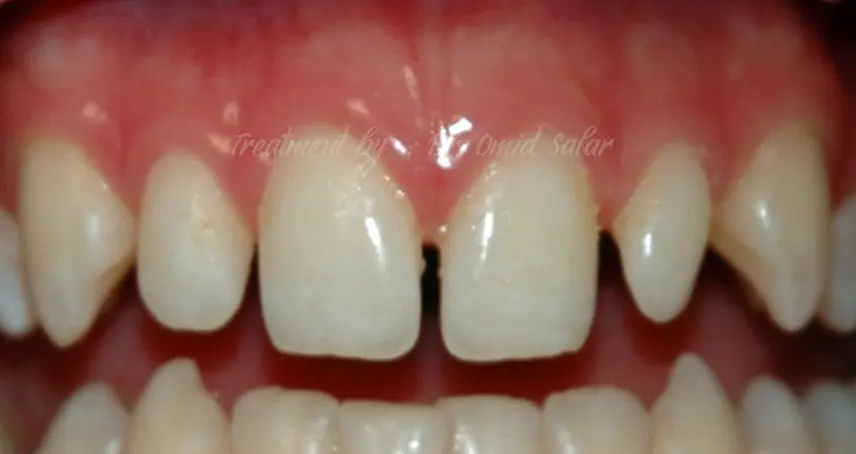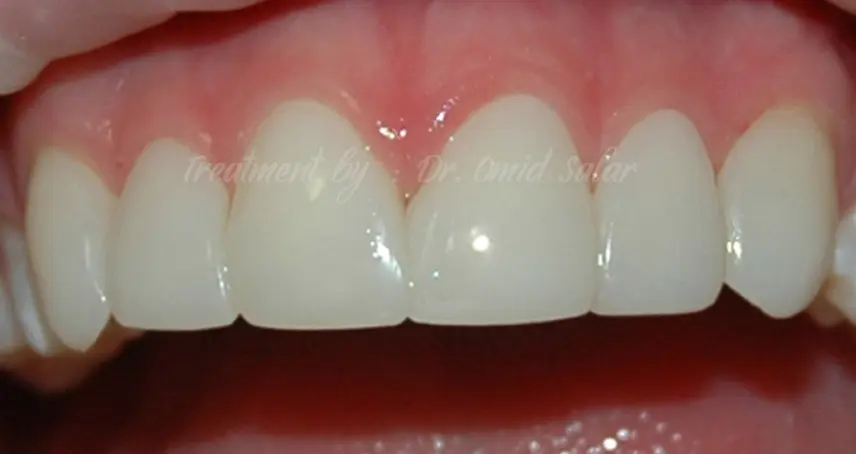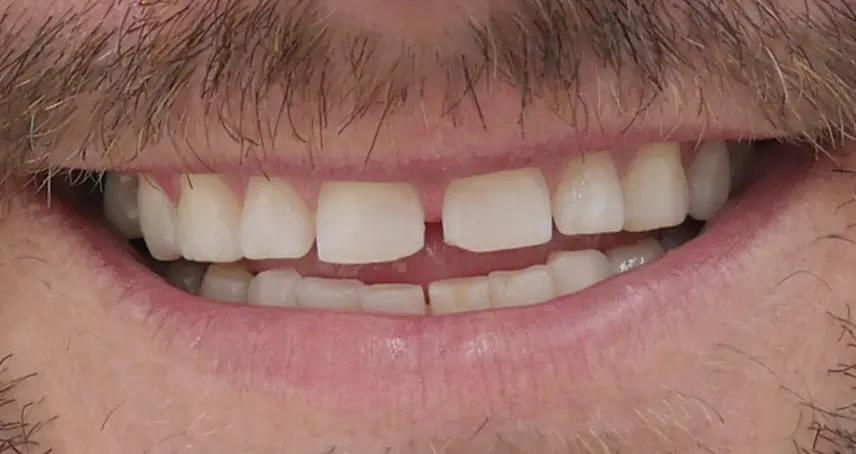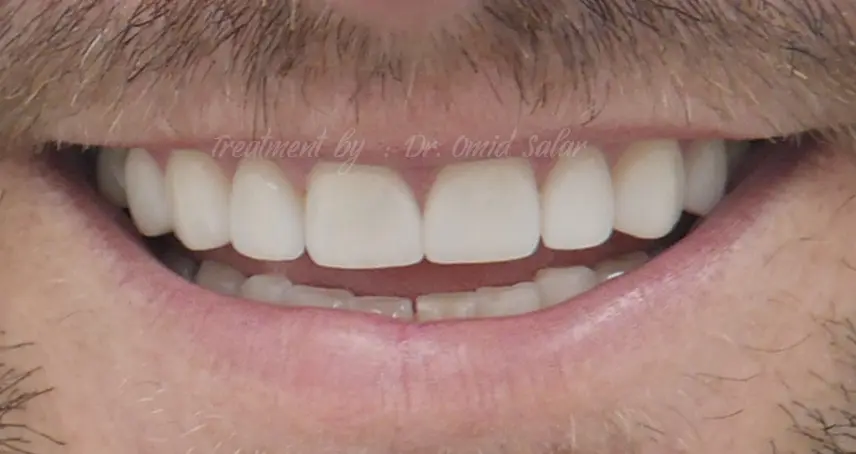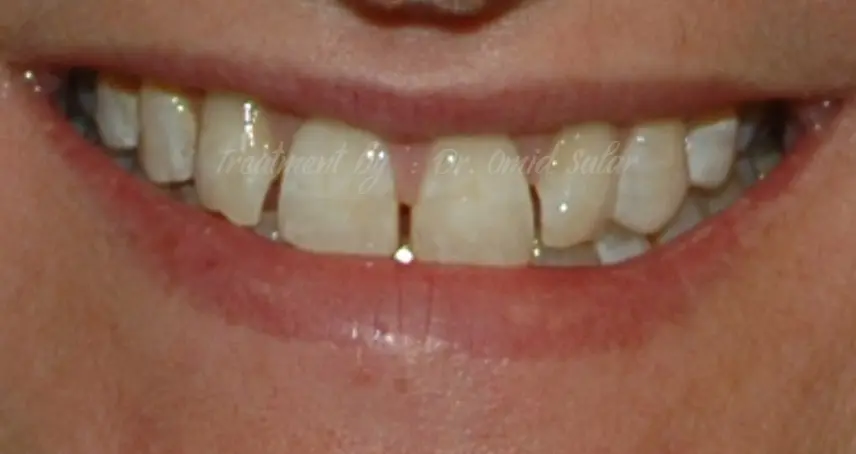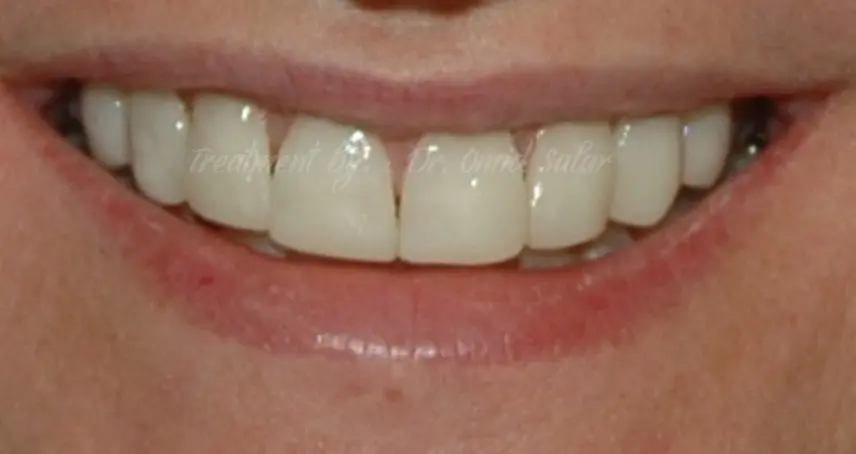Many different methods are practised for closing gaps between teeth. The decision depends mostly on the size of the gap and the desired outcome from a functional and cosmetic point of view.
The main methods to close space between the teeth are:
- Braces (orthodontic treatment)
- Direct bonding (composite resin)
- Composite veneers
- Porcelain veneers
Braces
To close large spaces between the teeth, braces are the best option, especially if other problems are present, such as teeth alignment issues and problems with bite (e.g. a crossbite). If the shape, colour and size of the teeth are acceptable, braces will deliver good results. However, if shape, colour or size are not desirable, additional cosmetic treatments (i.e. veneers) may be necessary afterwards. This can increase the cost of the treatment. Wearing braces also needs some patience, as it typically takes 12–18 months to see the results. It may also be possible to close the space using clear retainers.
Direct bonding
Direct resin bonding – which means adding tooth-coloured filling material to the side of the teeth next to the gap – is a very simple, cost effective and conservative option for closing gaps between teeth. However, if the colour and shape of the teeth are not desirable, the results may be suboptimal.
Composite veneers
If the gap between the teeth is small to average size (1-3mm) and some discoloration or unfavourable shape is present, this option can provide good results, as the veneers cover the whole surface of the tooth and very good cosmetic outcomes are achievable. Closing gaps between teeth using composite veneers require minimal tooth preparation and are less expensive than porcelain veneers. As these veneers are directly built in the dental chair, good results rely heavily on the skill of the clinician.
Porcelain veneers
Porcelain veneers can mask slightly larger gaps between the teeth and provide excellent cosmetic results because more modifications to the teeth are possible. Also, they are much stronger than composite veneers for areas where bite loads need to be considered. The downside is that they cost more and need slightly more teeth preparation than composite veneers.
Dental Implants
Dental Implants can be utilized to close larger gaps between the teeth. This option is often suitable if the gap is due to congenitally missing or extracted teeth. One of the most common examples is when the second front tooth (lateral incisors) are congenitally missing. This option will provide excellent cosmetic and functional results and does not require any modification of adjacent teeth. If you want to know more about dental implants visit our comprehensive dental implants guide page. At Trusted Dental Gold Coast we offer a free dental implant consultation to assess if this is the suitable option to close the gap between your teeth.
Case Studies
Here are three cases from Trusted Dental Gold Coast where gaps between the teeth were treated using veneers.
Case 1 (closing gaps between teeth by reshaping and addition to naturally small teeth)
This young man was referred to us after his teeth were aligned by braces to reshape his small central and lateral incisor teeth (four upper front teeth) and close the gaps. We used composite veneers and achieved the desired colour and shape to close the space.
Case 2 (closing gaps between teeth and increasing height and restoring lost structure due to grinding)
This man was not happy with the gap between his teeth. Furthermore, he had lost some height of his upper front teeth due to past grinding. Using porcelain veneers and a very thorough process involving mock-ups and digital reconstructions, the gap was closed and the height restored.
Case 3 (closing gaps between teeth using small additions to width)
This lady presented with multiple spaces between her front teeth. The aim was to have minimum preparation of the teeth and a cost-effective treatment. We decided to use composite veneers, and good results were achieved.
If you need more information about closing gaps between the teeth or want to know which option is most suitable for you, book a complimentary consultation at Trusted Dental Gold Coast.

